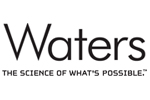Tuesday, 8 November 2011 |
Session: Mass Spectrometry as a Tool for Protein Characterisation |
| | 08:00 | Registration | 09:00 |  | Keynote Presentation Using Ion Mobility Spectrometry-Mass Spectrometry (IMS-MS) to Unravel Biomolecular Assembly Pathways
Alison Ashcroft, Professor, Leeds University, United Kingdom
The application of ion mobility spectrometry-mass spectrometry to map the assembly pathways of macromolecular protein complexes and characterise transient assembly intermediates. Examples include amyloid fibril, virus capsid and bacterial pilus aggregation systems. |
| 09:30 | Intrinsic Disorder in Proteins: A Challenge for (Un)structural Biology met by Ion Mobility Mass Spectrometry
Perdita Barran, Senior Lecturer, Edinburgh University, United Kingdom
Up to 40% of proteins are intrinsically disordered. Ion Mobility mass spectrometry characterizes how this disorder for the transcription factor p53 and its mutants. Implications for drug discovery and understanding the molecular biology of cancer will be discussed. | 10:00 | Structural Analysis of Intact Monoclonal Antibodies by Top-Down Mass Spectrometry
Yury Tsybin, Assistant Professor, Ecole Polytechnique Federale De Lausanne, Switzerland
Improving qualitative and quantitative characterization of monoclonal antibodies is essential due to their increasing popularity as therapeutic drug targets. Here, we describe the performance of electron transfer dissociation-based top-down mass spectrometry for structural analysis of intact 150 kDa monoclonal antibodies. | 10:30 | Coffee Break and Networking in the Exhibition Hall | 11:15 | Homology-Driven Proteomics by LC-MS/MS
Andrej Shevchenko, Group Leader, Max Planck Institute of Molecular Cell Biology and Genetics, Germany
Homology-driven proteomics relies upon statistically significant similarity between the analyzed and reference peptide sequences available from some distantly related organisms. It covers crude mixtures of unknown biologically interesting proteins, such as insect and reptile venoms or fermented natural products of plant and animal origin having unusual nutritional properties. | 11:45 | HDMSE for Quantitative and Qualitative Profiling of Complex Protein Samples
Joanne Connolly, Business Development Applications Specialist, Waters Corporation, United Kingdom
Coupling liquid and gas phase separations to overcome the analytical space challenge in comprehensive and quantitative proteomics analysis. | 12:15 | Lunch and Networking in the Exhibition Hall | 13:30 | Poster Viewing Session | 14:15 | Improving Protein Identifications by Utilization of Amino Acid Composition Information Extracted from High-Mass Accuracy ETD and HCD Spectra
Frank Kjeldsen, Associate Professor, University of Southern Denmark, Denmark
Through spectral interrogation of ETD and HCD spectra, we have developed a methodology to utilize peptide amino acid informative peaks resulting in improved protein identifications via database searching. | 14:45 | From LDI to LSI - Advances in Laser-Based Desorption / Ionisation Mass Spectrometry
Rainer Cramer, Professor, University of Reading :(, United Kingdom
Many laser desorption/ionisation (LDI) techniques such as MALDI are pivotal to modern biological mass spectrometry. This presentation will discuss and dissect some of the most widely used LDI techniques with respect to their uniqueness and analytical value. | 15:15 | Coffee Break and Networking in the Exhibition Hall | |
Session: Protein:Protein Interactions and Post-Translational Modifications |
| | 16:00 | Trapped Ions and a Radical Approach to Data Interpretation
John Langley, Head of Characterisation and Analytics, University of Southampton, United Kingdom
The role of bench-top and FT-ICR ion trap MS in structural elucidation. Linking dissociation to structure to afford high throughput solutions and improved confidence in assignment. | 16:30 | Mass Spectrometric Approaches for Structural Elucidation of “Misfolding” - Aggregating Neurodegenerative Proteins: Ion Mobility- MS and Affinity- MS
Michael Przybylski, Professor, University of Konstanz, Germany
Recent developments and applications of ion mobility mass spectrometry (IMS-MS) and affinity-mass spectrometry of the oligomerization- aggregation of ß-Amyloid and a-Synuclein, key proteins for Alzheimer’s and Parkinson’s Disease, enable the structure identification of hitherto unknown truncation, aggregation and modified products, providing molecular details of their mechanism of formation. IMS-MS of the in vitro oligomerization of a-Synuclein revealed highly aggregation-prone autoproteolytic fragments, such as the C-terminal fragment, aSyn(72-140). | 17:00 | Mass Spectrometric Characterization of Muscle Membrane Proteins Following On-Membrane Digestion
Kay Ohlendieck, Professor, National University of Ireland, Iceland
Integral muscle proteins are difficult to investigate using mass spectrometry-based proteomics. To overcome this technical problem, we have applied one-dimensional gradient gel electrophoresis and on-membrane digestion to make peptides from integral proteins accessible for mass spectrometric analysis. | 17:30 | Drinks Reception |
Wednesday, 9 November 201108:00 |  Free Workshop Free Workshop
A Multivariate Statistical Tool Kit for Mass Spectrometry Based Metabolomics/Lipidomics
,
| |
Session: Emerging Themes |
| | 09:00 | Molecular Detection and Imaging at Atmospheric Pressure
Bernhard Spengler, Professor, University of Giessen, Germany
Atmospheric pressure ionization techniques are described for in situ mass spectrometry and for mass spectrometry imaging (MSI) of tissue. MSI was performed at high spatial resolution with high mass accuracy, for a reliable identification and localization of individual tissue components. | 09:30 | Field Asymmetric Waveform Ion Mobility Spectrometry Combined with Mass Spectrometry for Structural and Trace Analysis
Colin Creaser, Professor of Analytical Chemistry, Loughborough University, United Kingdom
Combining field asymmetric waveform ion mobility spectrometry with mass spectrometry provides complementary separation of gas-phase ions on the basis of differential mobility and mass-to-charge. The combination allows enhance separations of mixtures including the separation of isobaric ions. | 10:00 | Normalisation of LC-MS Data in Metabonomic Experiments – Long Time Know-How from Other Disciplines
Hubert Chassaigne, Scientific and Technical Project Officer, European Commission, Joint Research Centre, Belgium
Research in metabonomics is critically dependent on the generation of sound analytical data, which means both qualitative and quantitative. A key element is the normalisation of the signal in metabonomic experiments. A number of ways to normalise data are explored. | 10:30 | Coffee Break and Networking in the Exhibition Hall | |
Session: Biomarker Profiling |
| | 11:15 |  | Keynote Presentation Label-Free Proteomics Study of Alzheimer's Disease Mechanism
Roman Zubarev, Professor, Karolinska Institute, Sweden
Based on the investigation of Alzheimer’s-related blood plasma of 200+ individuals, we concluded that the disease may originate due to a combination of an elevated risk factor and a permissive phenotype. |
| 11:45 | Mass Spectrometry Based Serum Protein Profiling for the Early Detection of Breast Cancer
Rob Tollenaar, Professor, Leiden University Medical Center, Netherlands
| 12:15 | Lunch and Networking in the Exhibition Hall | 13:30 | Poster Viewing Session | 14:15 | Mass Spectrometry Based Serum Protein Profiling for the Early Detection of Colo-Rectal Cancer
Wilma Mesker, Assistant Professor, Leiden University Medical Center, Netherlands
A specific and sensitive alternative to screening colonoscopy is the use of proteomic biomarkers. Validation results validate our previous findings. This indicates a potential application of serum protein-profiling for early detection and may be applied in a population-based setting. | |
Session: Proteomics Approaches |
| | 14:45 | Peptide Fragmentation in a Proteomics Workflow
Maarten Altelaar, Junior Group Leader, Utrecht University, Netherlands
The choice of peptide sequencing technique(s) greatly influences the outcome of proteomics experiments. We evaluated CID and ETD sequencing for optimal peptide fragmentation depending on the peptide properties under investigation and implemented these in our proteomics workflow. | 15:15 | Coffee Break and Networking in the Exhibition Hall | 15:45 | New Analysis Methods for Membrane Proteins
Peter James, Professor, Lund University, Sweden
Increasing membrane protein coverage from 50 to 1500 proteins from any membrane. Creating a quantitative method. Handling and separating large and hydrophobic peptides. Increasing confidence levels for identification. Defining post-translational modifications. | 16:15 | A Multidimentional Phosphopeptide Enrichment Strategy Employing Titanium Dioxide Combined with SIMAC and HILIC for Highly Sensitive Phosphoproteomics
Melanie Schulz, Ph.D. student, University of Southern Denmark, Denmark
A novel strategy for quantitative assessment of thousands of phosphopeptides in large-scale phosphoproteomics from very low amount of starting material. | 16:45 | Close of Conference |
|
